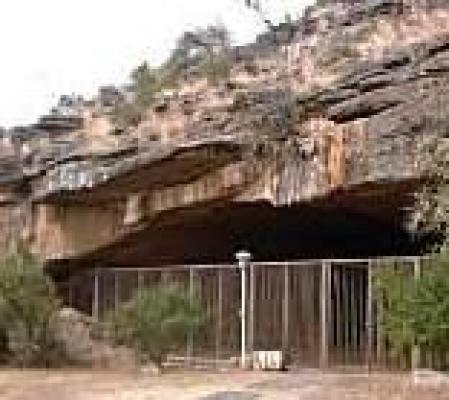Archaeological research at this massive cave site has revealed an immensely long record of human and environmental history spanning hundreds of thousands of years.
The cave and its surroundings (near Kuruman), form a conservation area with several features distinctive of the Kuruman Hills. The site is open to the public and includes an interpretative centre adjacent to the cave.
The site runs horizontally for 193 m into the base of a low conical foothill on the eastern flank of the Kuruman Hills. It is a very ancient solution cavity, exposed at its northern end by hillside erosion, in in stratified dolomitic limestone belonging to the 2,3 billion year old Ghaap Plateau Dolomite Formation.
Excavation teams from the McGregor Museum in Kimberley have revealed numerous fascinating artefacts. like stone impliments and engravings, decorated ostrich eggshells, Bushman hair, pollen dating back about 400 000 years, various animal bones and the 8 000 year-old teeth of a now extinct species of horse.
Visitors can marvel at the Bushman paintings in mixed media - plant roots and blood.
For those visitors interested in archeology, the Wonderwerk Cave is a must.
There is self-catering accommodation available on the site, in the form of chalets and a lapa and braai places.

